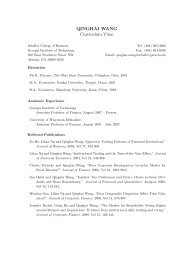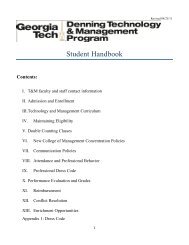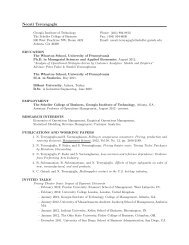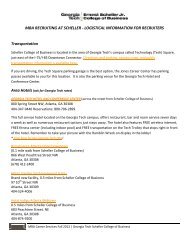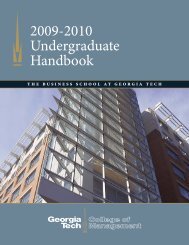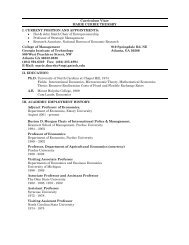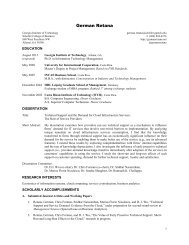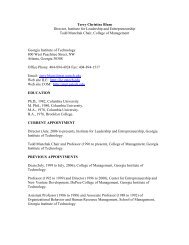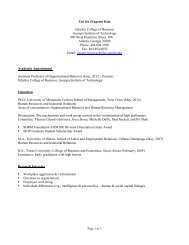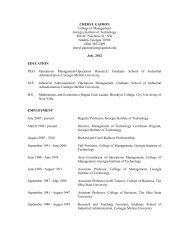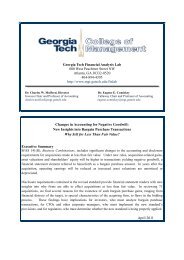Mars-Venus Marriages: Culture and Cross-Border M&A
Mars-Venus Marriages: Culture and Cross-Border M&A
Mars-Venus Marriages: Culture and Cross-Border M&A
You also want an ePaper? Increase the reach of your titles
YUMPU automatically turns print PDFs into web optimized ePapers that Google loves.
The antidirector indices are obtained from La Porta et al. (1998) for the acquirer <strong>and</strong> target<br />
nations. The coefficient is positive, <strong>and</strong> marginally statistically significant at 10%. The<br />
variable PCI_diff, measuring difference in income level between the two countries that was<br />
insignificant in Model 2 is now marginally significant at 10% level.<br />
In model 4, we begin our analyses of the impact of cultural distance between acquirer<br />
<strong>and</strong> target on long-term post-acquisition performance. In addition to deal-specific <strong>and</strong><br />
country-level economic variables, we use the natural logarithm of the Hofstede measure of<br />
cultural distance between the acquirer <strong>and</strong> the target nation. The natural logarithm achieves<br />
the purpose of capturing non-linearities in the relationship. The Hofstede variable is positive<br />
<strong>and</strong> significant at the 1% level (t-stat of 2.83). The positive sign of the coefficient indicates<br />
that as cultural distance increases, so does the BHAR of the acquiring firm, ceteris paribus.<br />
Controlling for cultural difference, PCI_diff, measuring difference in income level between<br />
the two countries, now becomes significant at 5% level while contested acquisitions have<br />
marginally significant (at 10%) negative effects.<br />
The Hofstede measure of cultural distance that we use in our analysis is one of<br />
several measures of the degree of dissonance between socio-legal characteristics of different<br />
countries. Other recent studies in finance (Stulz <strong>and</strong> Williamson (2003)) have used<br />
differences in religion <strong>and</strong> language to capture cultural differences while La Porta et al (1997,<br />
1998, 1999, 2002) used origin of legal system as another salient feature that determines the<br />
financial structure of a country. To establish that all the proxies of culture are closely related,<br />
we compute the correlations between the different measures of socio-legal differences. Our<br />
dummy variables for religion, language <strong>and</strong> legal origin take the value 1 when two countries<br />
have the same feature <strong>and</strong> 0 when they are different. Hofstede distance measures are highly<br />
correlated with language (-0. 84), religion (-0. 31) <strong>and</strong> legal origin (-0. 62) variables,<br />
suggesting that the differences in the various aspects of societies are closely related.<br />
All these variables can be viewed as being representative of the culture of a country.<br />
We use the four alternative measures in models 5 through 7 in the regression tables, but do<br />
not use them in the same regression due to high correlations. It turns out that the language<br />
16



